As digital transformation accelerates across industries, the role of software testing has grown significantly. In the pursuit of speed, quality, and agility, organizations are now rethinking traditional testing models. One standout approach gaining momentum is independent software testing, a shift driven by innovation, objectivity, and the rising demand for software quality assurance.
This blog examines the key drivers, emerging trends, and future predictions shaping the world of independent software testing services, while also exploring how businesses can best prepare for what lies ahead.
💡 What’s next? Keep scrolling to discover:
🚀 Understand the benefits of unbiased and scalable QA.
🚀 Key drivers behind the shift from complex product ecosystems to faster time-to-market.
🚀 Artificial Intelligence, cloud-based testing, and Testing-as-a-Service (TaaS).
🚀 Know about the rise of niche testing domains like IoT, Blockchain, and AR/VR.
🚀 How to prepare your business for independent testing models?
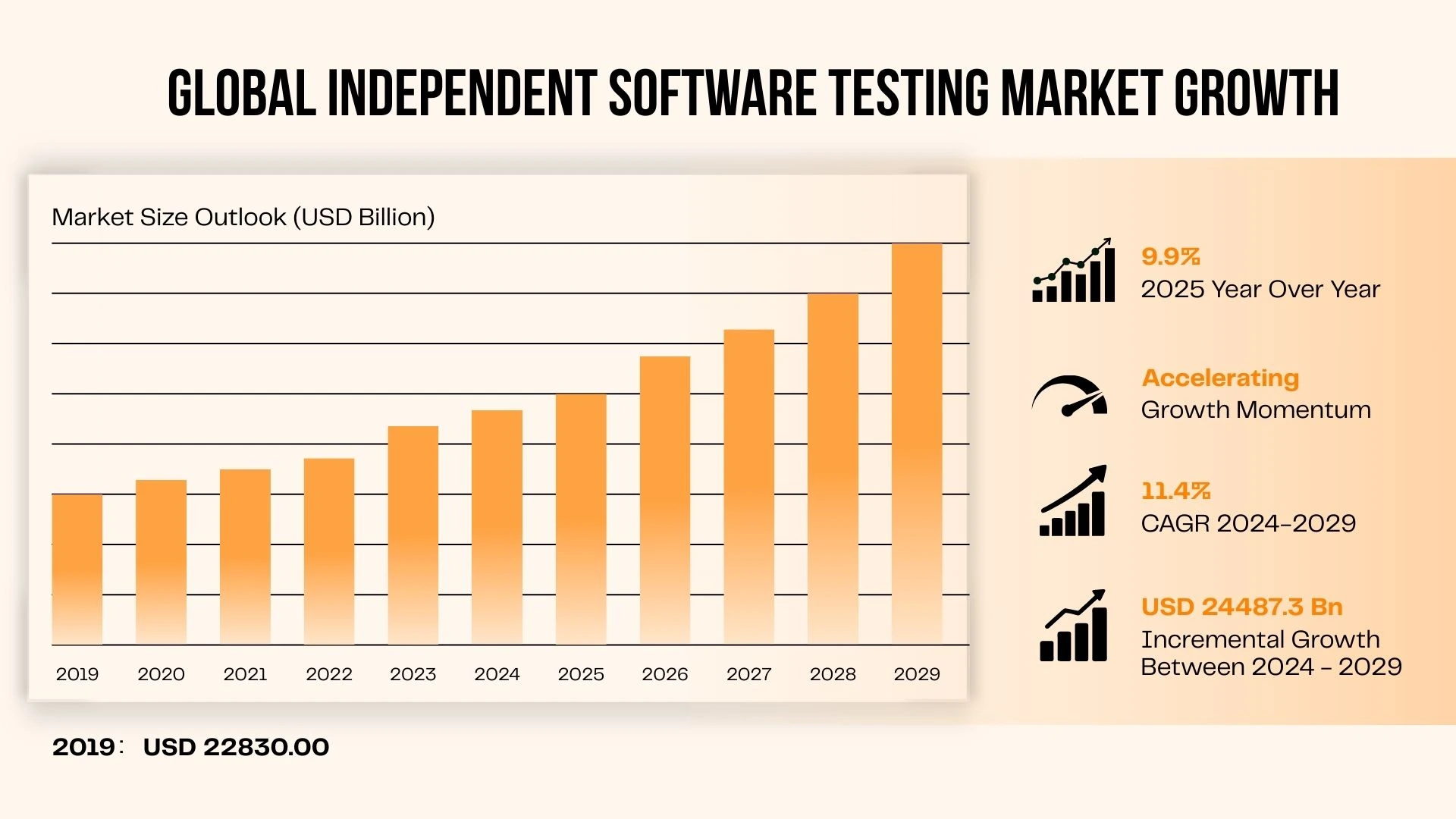
Why Independent Testing is Gaining Ground?
Independent software testing is becoming an increasingly preferred choice for businesses seeking high-quality, unbiased testing results. As software systems grow more complex and integrated, relying solely on in-house teams may introduce blind spots. Independent testing offers a strategic alternative to ensure a thorough and impartial evaluation.

The Growing Importance of Software Testing
Software testing isn’t just a phase in the software development life cycle (SDLC) or the broader software testing life cycle; it's a strategic necessity. As businesses increasingly rely on digital platforms to deliver products and services, ensuring that software functions flawlessly across devices, environments, and use cases has become critical.
Moreover, with the rise of continuous integration and continuous delivery (CI/CD), automated testing ensures quick feedback loops, enabling teams to innovate faster without compromising quality. In short, software testing is no longer just a backend task; it's a core component of delivering business value and maintaining trust in the digital age.
Shift Toward Independent Testing Models
Traditional in-house testing teams often face limitations when it comes to maintaining objectivity, scaling resources, and keeping up with the latest tools and methodologies. Internal testers may unconsciously develop a bias toward the software they've helped build, which can lead to oversight of critical issues. Additionally, in fast-paced environments, in-house teams are frequently stretched thin, balancing multiple responsibilities and often lacking the time or expertise to conduct exhaustive testing.
Independent testing also provides flexibility; companies can scale testing efforts up or down based on project needs without incurring the long-term costs of hiring and training full-time QA staff. This model enables faster time-to-market, improved product quality, and higher customer satisfaction, making it an increasingly preferred approach in both startups and enterprises alike.
Key Drivers Behind the Shift to Independent Testing
Organizations are opting for independent testing due to growing system complexities and a need for faster, unbiased, and cost-effective quality assurance. These drivers are reshaping how enterprises approach testing in SDLC methodologies, reinforcing structured SDLC in software engineering practices with external QA support.

Need for Unbiased Quality Assurance
In-house testers may unintentionally overlook issues due to familiarity bias. Being closely tied to the development process, they might miss usability concerns, edge cases, or subtle bugs that an independent eye could easily detect. This often compromises overall product quality, especially when teams are under pressure to deliver quickly, leaving little room for objectivity.
Independent QA partners offer a fresh outlook and are well-positioned to implement shift-left testing, where quality checks are introduced early in the software lifecycle. This proactive approach ensures that issues are identified and resolved before they escalate, leading to better outcomes.
🤔 Why does independent QA matter?
- Reduces defect rates through unbiased testing practices.
- Highlights gaps in usability and performance that internal teams may miss.
- Strengthens adherence to industry regulations and customer expectations.
For those unfamiliar, software quality assurance ensures that developed applications meet defined standards through structured testing. Independent testers add value by applying this process objectively and consistently.
Key benefits of independent QA experts:
- Enhanced reliability and reduced risks of failures.
- Boosted stakeholder and customer confidence.
- Improved quality before market release.
By engaging independent QA, organizations achieve stronger results, lower defect rates, and more effective software quality assurance overall.
Complex Product Ecosystems
Modern software applications interact with diverse APIs, microservices, and third-party tools, forming intricate and interconnected product ecosystems. Each component, whether it’s a payment gateway, authentication service, or data analytics API, adds layers of complexity, and any failure in communication between them can cause widespread issues across the entire application.
Robust integration testing ensures that data flows seamlessly and accurately in real-time across interconnected systems.
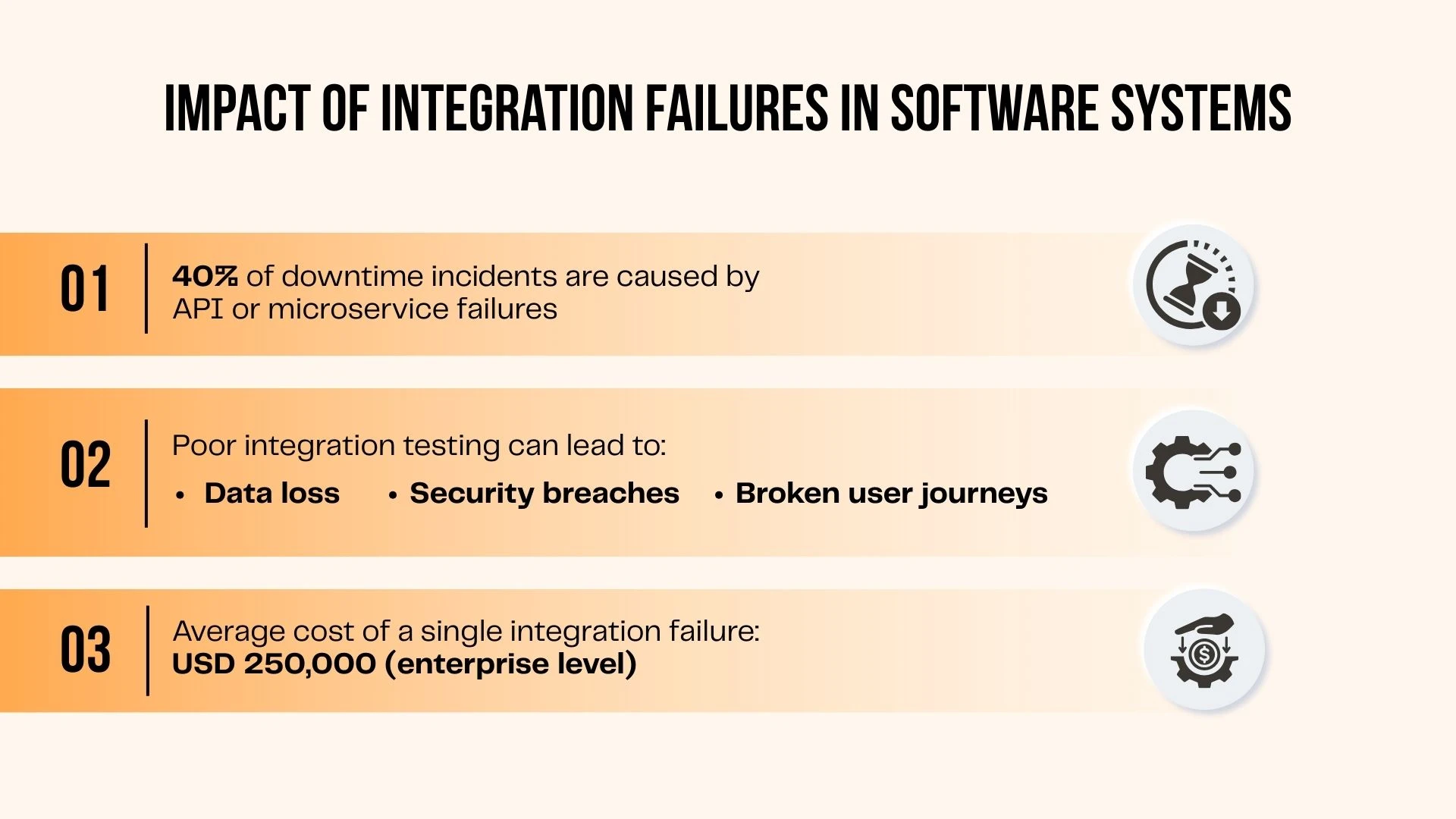
In such integration-heavy environments, ensuring smooth functionality, data consistency, and performance becomes a significant challenge. This is where independent testing firms prove highly effective.
With specialized skills and deep experience in testing complex, distributed systems, they are equipped to design and execute robust integration tests. These experts simulate real-world interactions among components, detect bottlenecks, identify compatibility issues, and validate system behavior under various load conditions.
Cost and Time Efficiency
In a competitive market, businesses are under constant pressure to reduce time-to-market while maintaining high product quality. Building and maintaining an in-house QA team that meets all testing needs, manual, automated, functional, and performance, can be time-consuming and expensive.
This is why many companies choose to outsource testing to independent providers.
By scaling their automation efforts, independent QA teams help reduce regression timelines and manual effort.
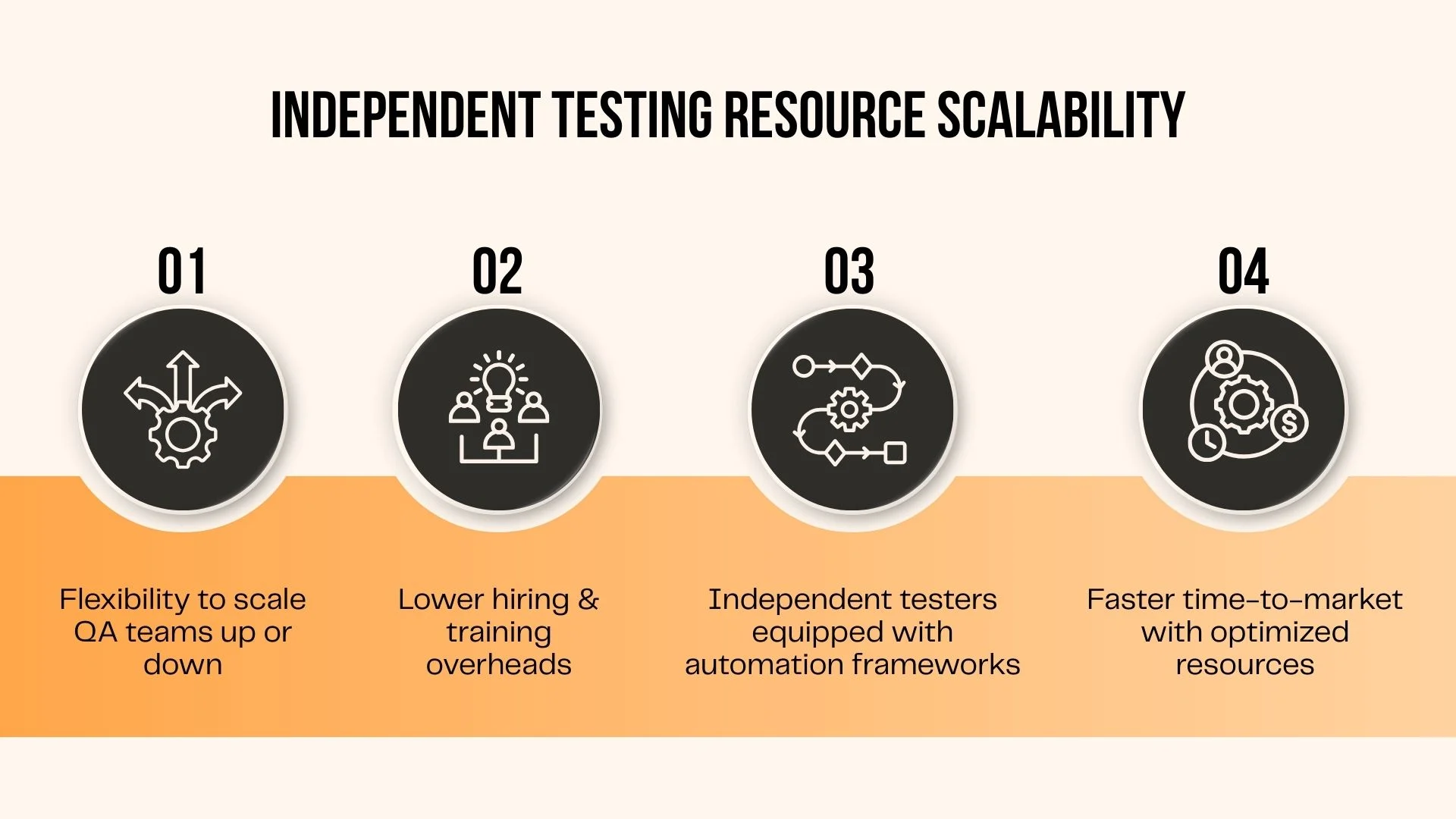
Independent testing firms help organizations achieve both cost and time efficiency. By leveraging pre-built automated software testing frameworks and reusable test cases, they speed up regression cycles and eliminate repetitive manual work. Their teams are already trained, equipped, and ready to scale, allowing businesses to ramp up testing quickly without incurring the overhead of hiring and onboarding.
Furthermore, these independent teams are well-aligned with agile SDLC processes, ensuring that testing is continuous, efficient, and in sync with rapid development iterations. The result is faster feedback, fewer production bugs, and optimized resource utilization, leading to reduced development costs and quicker product delivery without compromising quality.
Emerging Trends in Independent Software Testing
New technologies and methodologies are revolutionizing how independent testing is conducted. From the integration of Artificial Intelligence to the rise of cloud-native platforms, these trends are defining the next era of software testing services. AI-driven test automation services with real-time analytics are helping businesses reduce manual effort, detect anomalies faster, and adapt to complex, evolving applications.
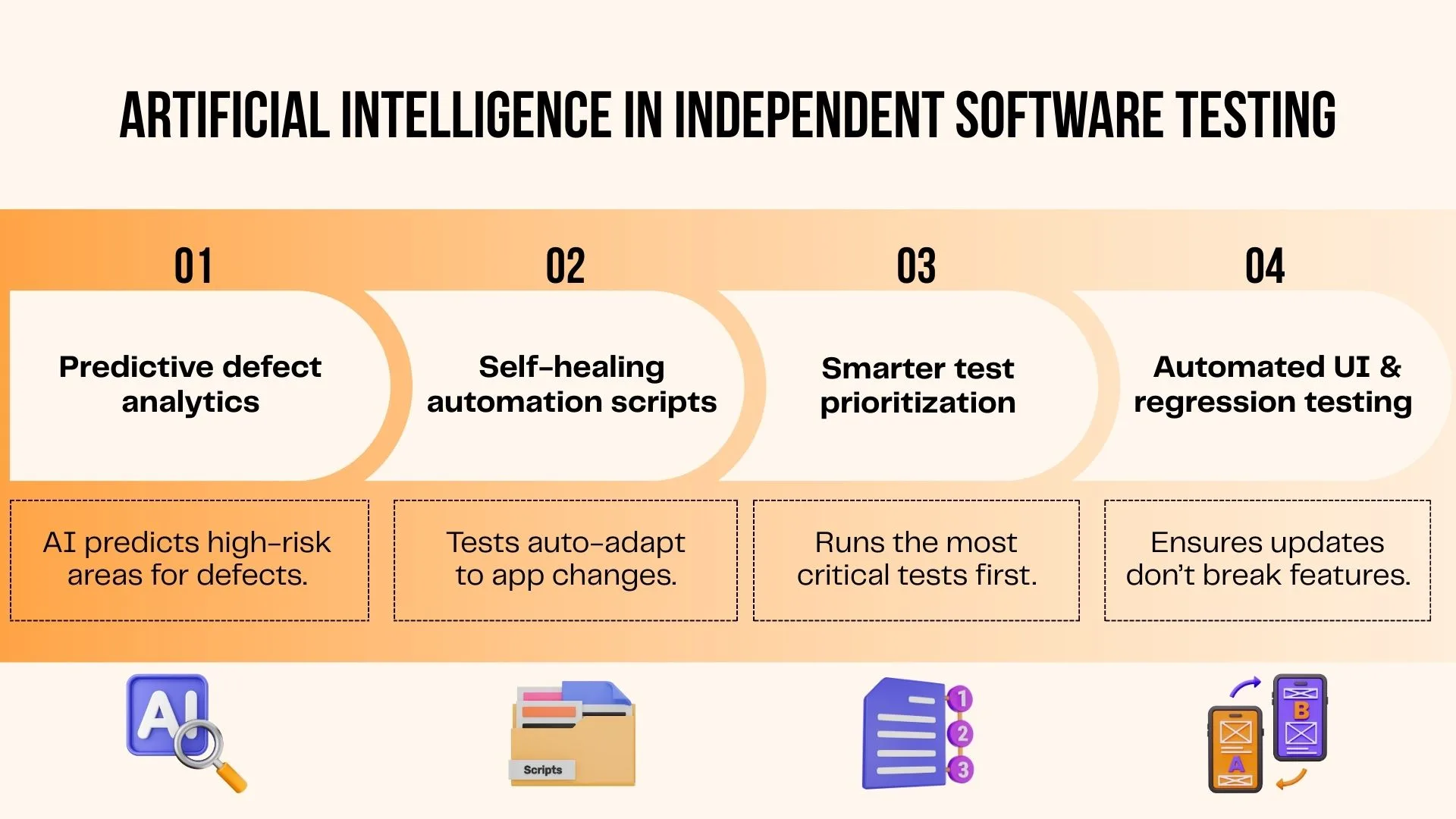
Artificial Intelligence and Machine Learning in Testing
The integration of AI and machine learning in testing is revolutionizing the approach to software quality assurance. Instead of relying solely on manual judgment or traditional test scripts, QA teams can now utilize AI-powered tools to identify defect-prone areas in real-time analytics within the codebase, based on historical bug data, user behavior, and code complexity.
AI also helps prioritize test cases intelligently, determining which ones are most critical based on risk factors, code changes, or usage frequency. Additionally, repetitive tasks such as test script maintenance, test data generation, and UI validation can be handled via automated testing using AI models that learn and adapt over time.
One of the most impactful benefits is seen in software regression testing and functional testing, where AI-driven analytics analyze code changes and past defects to optimize test coverage. This improves not only accuracy by reducing false positives and negatives, but also efficiency, allowing faster, smarter releases in agile and DevOps environments. Independent testers are leveraging autonomous testing in conjunction with predictive analytics for better outcomes.
Cloud-Based Testing Environments
With the increasing pace of cloud computing adoption, traditional testing infrastructure is giving way to more scalable and agile cloud-based testing environments. Independent testers now rely on cloud platforms to create on-demand, virtual environments that replicate real-world scenarios, ranging from different devices and operating systems to varied user loads and geographies.
Cloud platforms enable independent testers to perform cross-platform validation in real-time across geographies.
This shift offers numerous advantages. Scalability becomes seamless, as resources can be ramped up or down as needed without investing in physical infrastructure. Remote collaboration is enhanced since distributed QA teams can access and manage testing environments from anywhere, improving coordination and productivity.
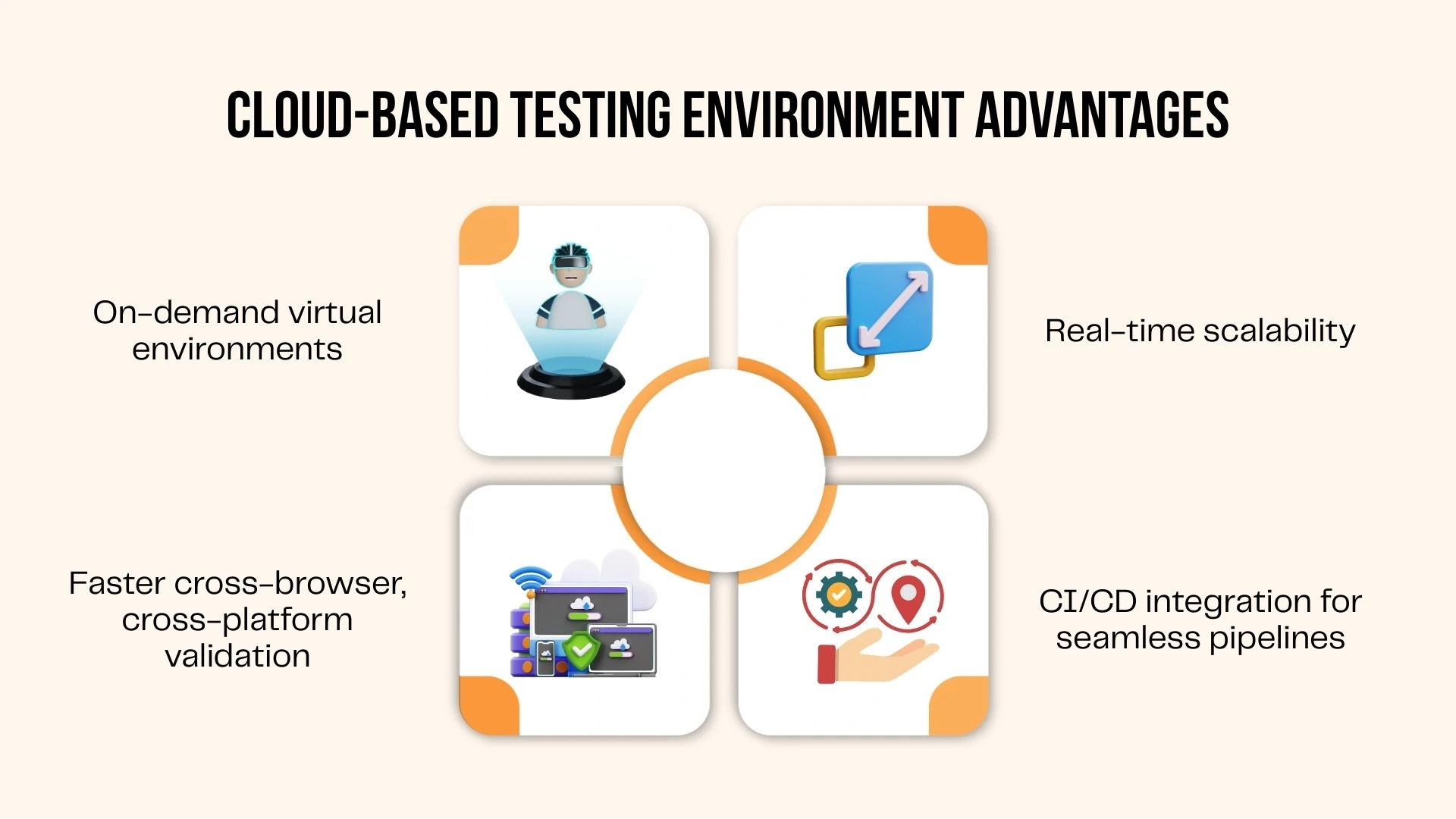
Cloud-based testing also enables flexible deployment, allowing continuous integration pipelines to test in real-time across multiple configurations. This is particularly useful for performance testing services, where simulating high traffic loads across global regions is essential. It also enhances cross-platform validation, ensuring a consistent user experience across web, mobile, and hybrid software applications.
By leveraging the cloud, independent testing providers can deliver faster, more comprehensive, and cost-effective testing solutions, perfectly aligned with modern software delivery needs.
Predictions for the Future of Independent Software Testing
The future of independent testing is dynamic and technology-led. From AI testing frameworks to niche domain testing, companies will increasingly rely on testing specialists to gain a competitive edge. Testing for edge computing environments will become a critical niche as businesses deploy applications closer to end-users.
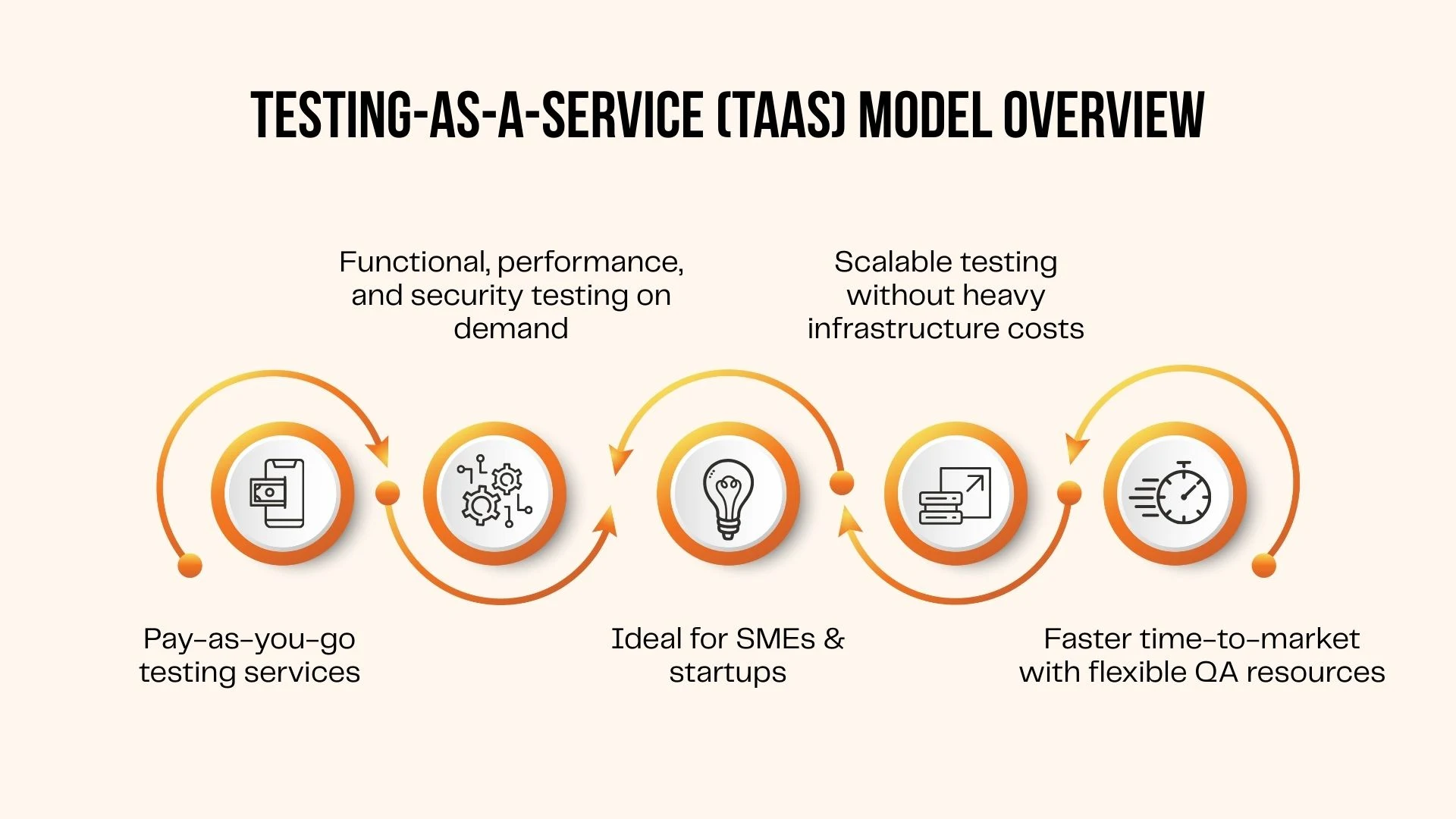
Rise of Testing-as-a-Service (TaaS)
The Testing-as-a-Service (TaaS) model is becoming increasingly popular as businesses seek flexible and scalable testing solutions. TaaS enables companies to access a wide range of specialized application testing services, including functional testing, performance, security, and usability testing, on a pay-as-you-go basis. This model eliminates the need for heavy investments in QA infrastructure, tools, or full-time personnel.
TaaS is especially valuable for SMEs and startups, which often face resource constraints but still need to deliver high-quality software to stay competitive. With TaaS, these organizations can tap into expert QA talent and modern testing tools without having to build an in-house team. This allows them to scale testing efforts up or down based on project requirements, accelerating time-to-market while maintaining product reliability.
As digital transformation grows across industries, TaaS is emerging as a cost-effective, on-demand solution for businesses seeking top-notch QA with reduced overhead.
Greater Adoption of AI-Driven Test Frameworks
The greater adoption of AI-driven test frameworks is transforming how modern QA teams approach automation. Tools like Selenium, Test.ai, and Testim are leading this evolution by incorporating intelligent features that go beyond traditional scripting.
These AI-enabled testing solutions support capabilities such as self-healing scripts, where tests automatically adjust to minor UI changes, and dynamic locators that adapt based on page structure or user behavior.
These Artificial Intelligence tools optimize existing automation efforts, making test suites more stable and reliable. Emerging autonomous testing tools can self-correct and execute test cases without human intervention.
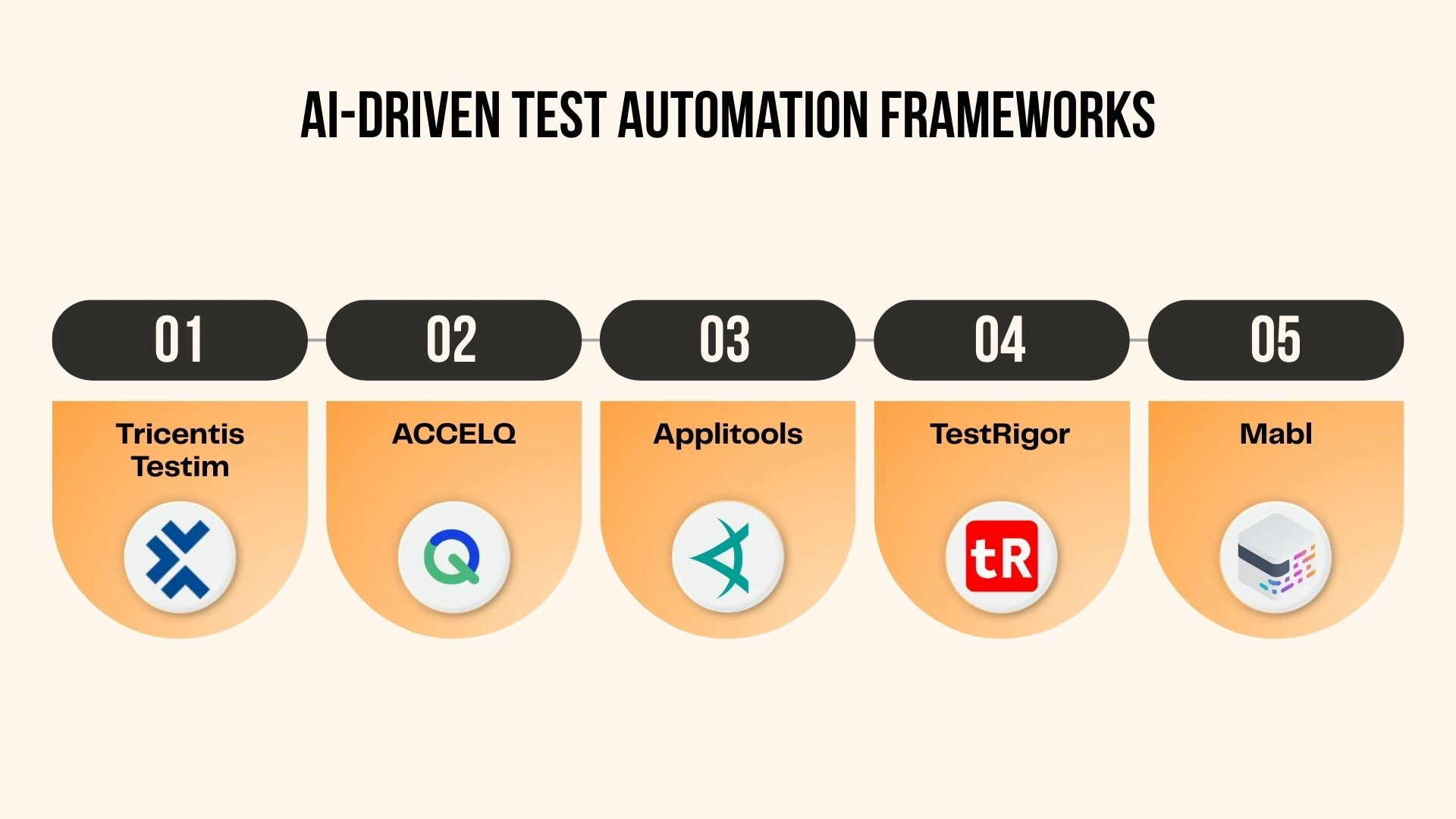
This reduces script maintenance time, increases test reliability, and allows for broader coverage with less manual intervention. These tools are redefining what it means to offer test automation services, as they empower QA teams to work more efficiently while reducing flaky test cases and minimizing regression issues.
By enhancing both speed and accuracy, AI-driven frameworks are helping organizations achieve more stable CI/CD pipelines and better software quality in less time.
Specialized Testing Niches (IoT, Blockchain, AR/VR)
As emerging technologies become mainstream, independent testers are increasingly focusing on specialized testing niches like IoT, Blockchain, and AR/VR. These high-growth domains present unique QA challenges that require not just functional testing practices, but advanced simulation environments and deep domain expertise. As more enterprises leverage edge computing for real-time data processing, independent testers must validate distributed architectures under diverse network conditions.
In modern software quality assurance, different emerging technologies require specialized testing approaches:
- IoT Testing
- Evaluate device interoperability.
- Check sensor responsiveness.
- Validate real-time data integrity under varied network conditions.
- Use network performance testing to confirm reliability.
- Blockchain Testing
- Validate smart contracts for accuracy.
- Test consensus mechanisms.
- Assess security protocols.
- Ensure data immutability and transaction reliability.
- AR/VR Testing
- Conduct immersive experience QA.
- Test user interactions and responsiveness.
- Measure latency and rendering accuracy.
- Verify consistency across multiple devices.
Independent testing providers with the capability to handle such complexities are carving out competitive advantages in these verticals. Their ability to offer targeted solutions in these emerging domains makes them indispensable partners for companies developing next-gen tech products.
Drawbacks of In-House Software Testing
While many development teams begin their QA journey with in-house software testing, this approach can quickly show limitations as projects scale and grow in complexity. One of the major challenges is scalability. Internal QA teams often struggle to keep up with increased workloads, especially during rapid development cycles or product launches. Hiring and training new QA staff on short notice isn't always feasible, leading to testing bottlenecks and delayed releases.
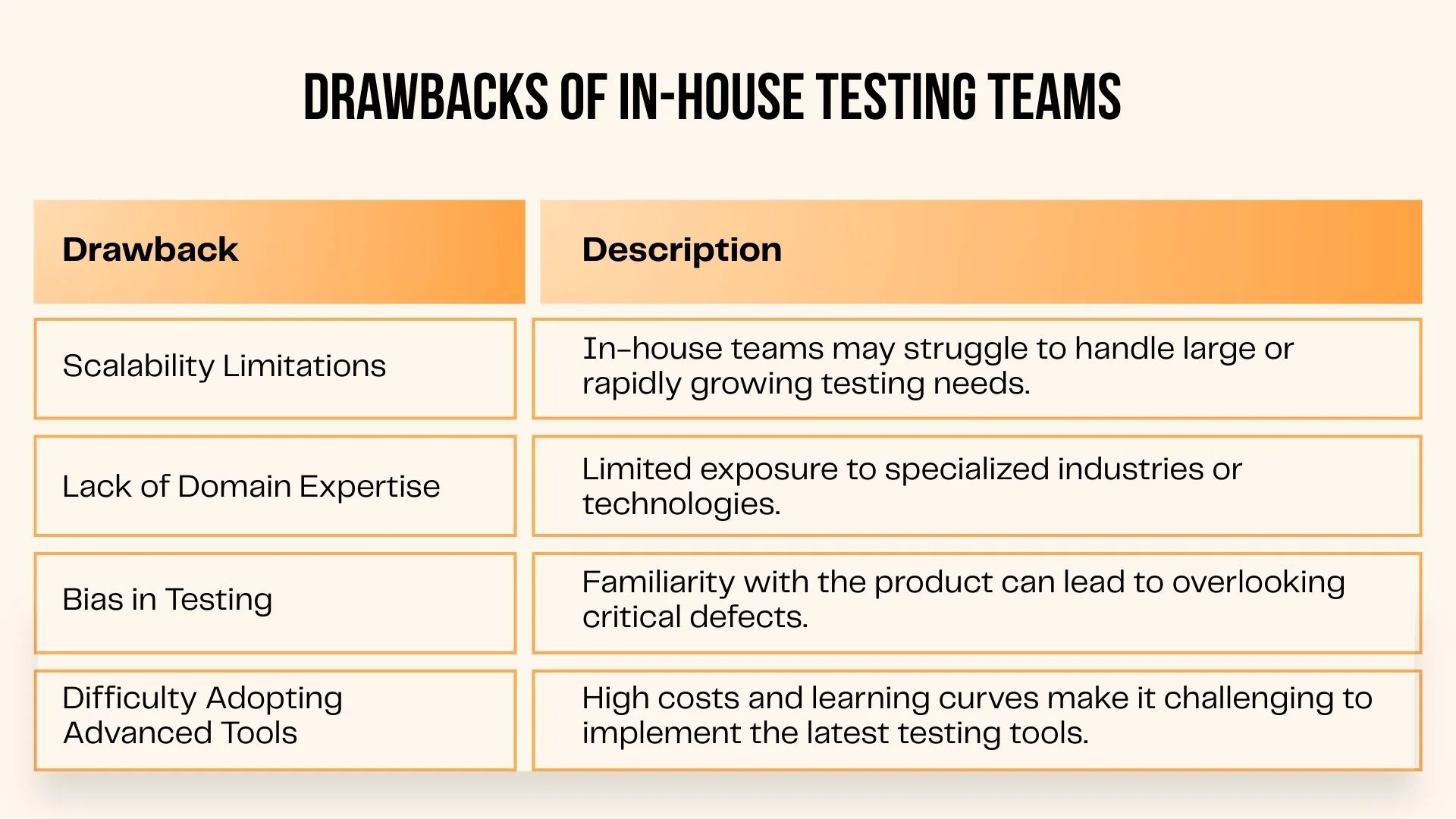
In-house QA teams also face difficulties when trying to adopt modern tools and practices. For instance, incorporating advanced solutions like the JIRA software testing tool into their workflow may require significant learning curves, integrations, or changes in team dynamics.
Similarly, scaling QA automation, a must-have for fast-moving agile teams, can be slow and expensive, especially when automation frameworks, scripting skills, and infrastructure are still developing.
Without proper infrastructure, offering a strategic alternative to ensure a thorough and impartial evaluation during software development. making a dedicated load testing service a more effective option for simulating real-world traffic and performance.
Overall, while in-house testing offers control and familiarity, it often lacks the agility, specialization, and objectivity that today’s competitive software landscape demands.
How Businesses Can Prepare for the Future?
To stay competitive, businesses must evolve their QA strategies. Embracing independent testing models and preparing their teams and infrastructure is crucial to navigating future challenges. Organizations must adopt shift-left testing strategies to catch defects earlier and improve coverage. Focusing on quality engineering rather than just QA ensures end-to-end accountability across the product lifecycle.
Investing in the Right Tools and Talent
Including some of the best quality assurance software available in the market, along with hiring skilled QA engineers, ensures robust and scalable QA pipelines. Talent and tools are both crucial in the era of software performance testing. Partnering with third-party automation services allows companies to implement scalable, efficient testing processes without overloading internal teams.
Partnering with Niche Testing Experts
Specialized vendors offer domain-centric insights and quality assurance management software tools to streamline validation in critical industries. A skilled QA tester with domain-specific knowledge ensures precise QA testing tailored to regulatory and performance demands.
Encouraging Collaboration Between Dev and Test Teams
Independent testing doesn’t mean isolated testing. Software developers, quality assurance analysts, and testers must collaborate throughout the stages of the SDLC throughout the stages of the SDLC to align on goals, share knowledge, and create a strong quality culture. Embedding quality engineering principles helps development and QA teams align on shared objectives and measurable KPIs.
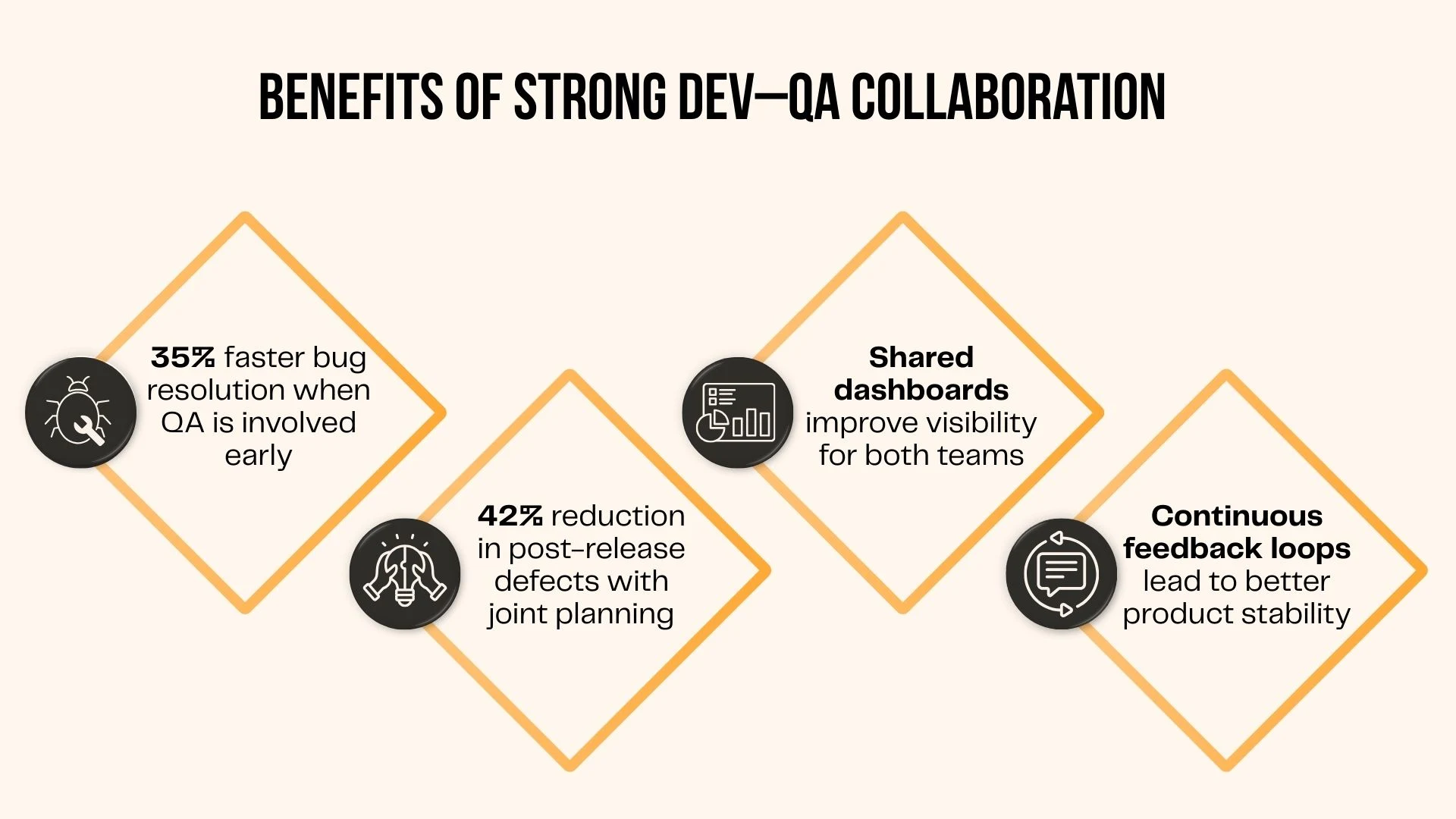
Conclusion
Independent software testing has transformed from a secondary support activity to a strategic pillar in modern software development and engineering. As software applications become more complex and user expectations grow, relying solely on in-house QA is no longer sufficient.
The shift toward independent testing models addresses the limitations of scalability, objectivity, and domain expertise, filling the gaps left by traditional teams. By offering unbiased quality assurance and deeper specialization, independent testing ensures that software is not just functional, but future-ready.
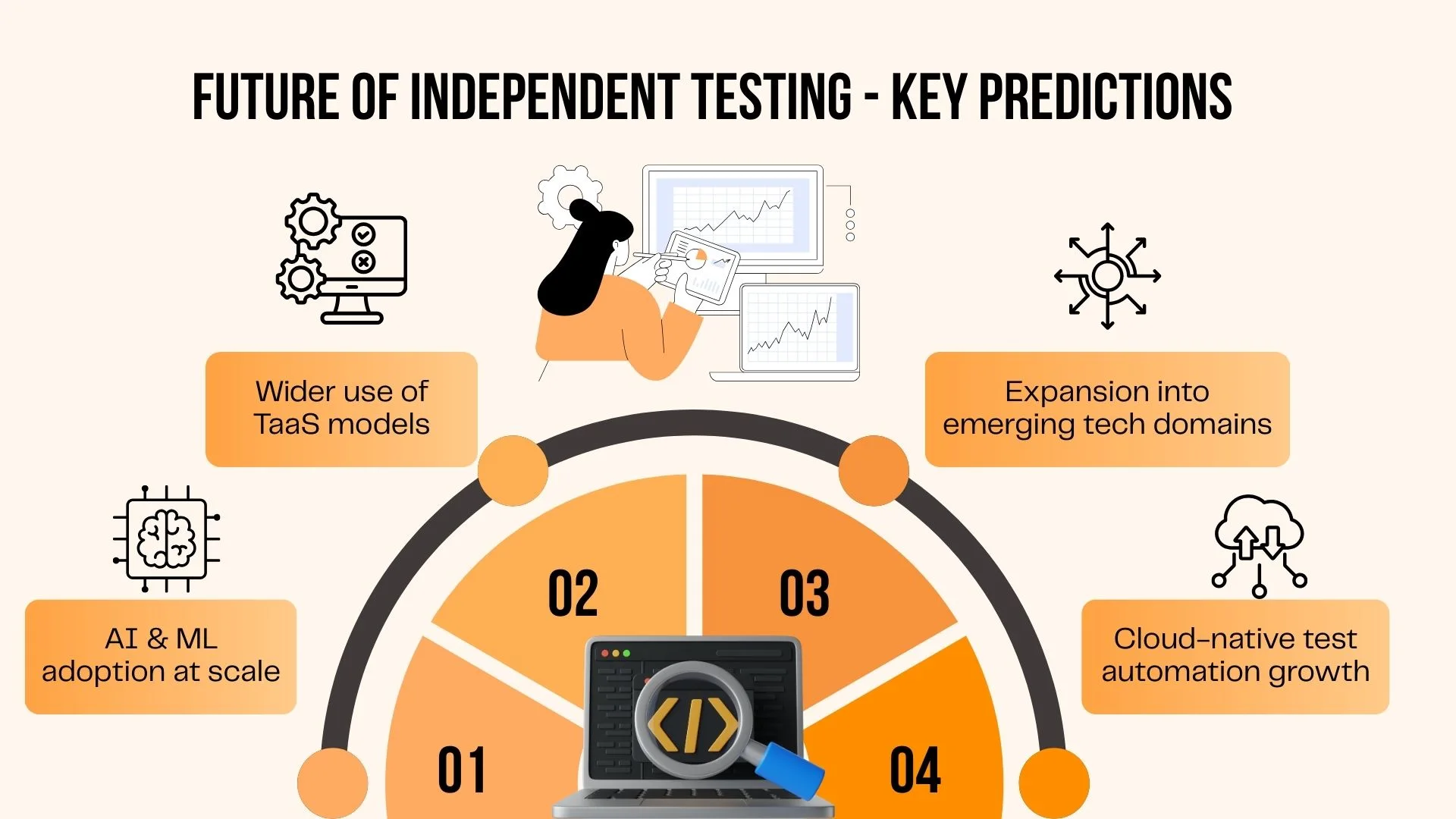
This evolution is further accelerated by cutting-edge technologies such as AI in software testing, QA automation, and cloud-based testing environments. Tools like Selenium, Test.ai, and Testim are redefining how we execute and maintain tests, enabling faster feedback, smarter test case prioritization, and self-healing automation frameworks. Meanwhile, Testing-as-a-Service (TaaS) and cloud-based platforms are making enterprise-grade testing accessible to startups and SMEs, providing scalability, collaboration, and cost-efficiency without requiring heavy infrastructure investment.
By integrating continuous testing practices, companies can reduce defect leakage and accelerate time-to-market. Combining AI-driven frameworks with shift-left testing significantly reduces test cycle time. Lower defect rates lead to improved customer trust and faster product adoption.
Looking ahead, the rise of specialized testing niches in areas like IoT, Blockchain, and AR/VR further highlights the need for independent expertise. With rapid digital transformation and increasingly agile development cycles, software must be secure, performant, and user-centric from day one. These services are powered by modern tools for performance testing, which enable accurate load simulation and stress analysis in cloud-native environments. In this landscape, embracing independent testing isn’t just an operational upgrade; it’s a strategic imperative for delivering high-quality, resilient digital experiences with confidence. Autonomous testing is expected to become a staple for faster CI/CD pipelines. Enterprises that invest in quality engineering see faster releases, lower maintenance costs, and enhanced user trust.
FAQs
Which testing tool is in demand in 2025?
Tools like Selenium, Test.ai, and JMeter performance testing are in high demand due to their automation, load testing, and AI capabilities.
What is the latest trend in software testing?
AI in software test automation, cloud-based environments, and Testing-as-a-Service (TaaS) are leading the way.
What is an independent testing specialist?
An independent testing specialist is a QA professional or agency that provides unbiased software testing services separate from the development team to ensure better quality.
Will AI replace performance testing?
AI won’t replace performance testing, but it will significantly enhance it through better test planning, predictive analytics, and anomaly detection.
Should integration tests be independent?
Yes, integration tests should be independent to ensure reliability, modularity, and maintainability within complex software systems, especially during qa automation services and regression cycles.



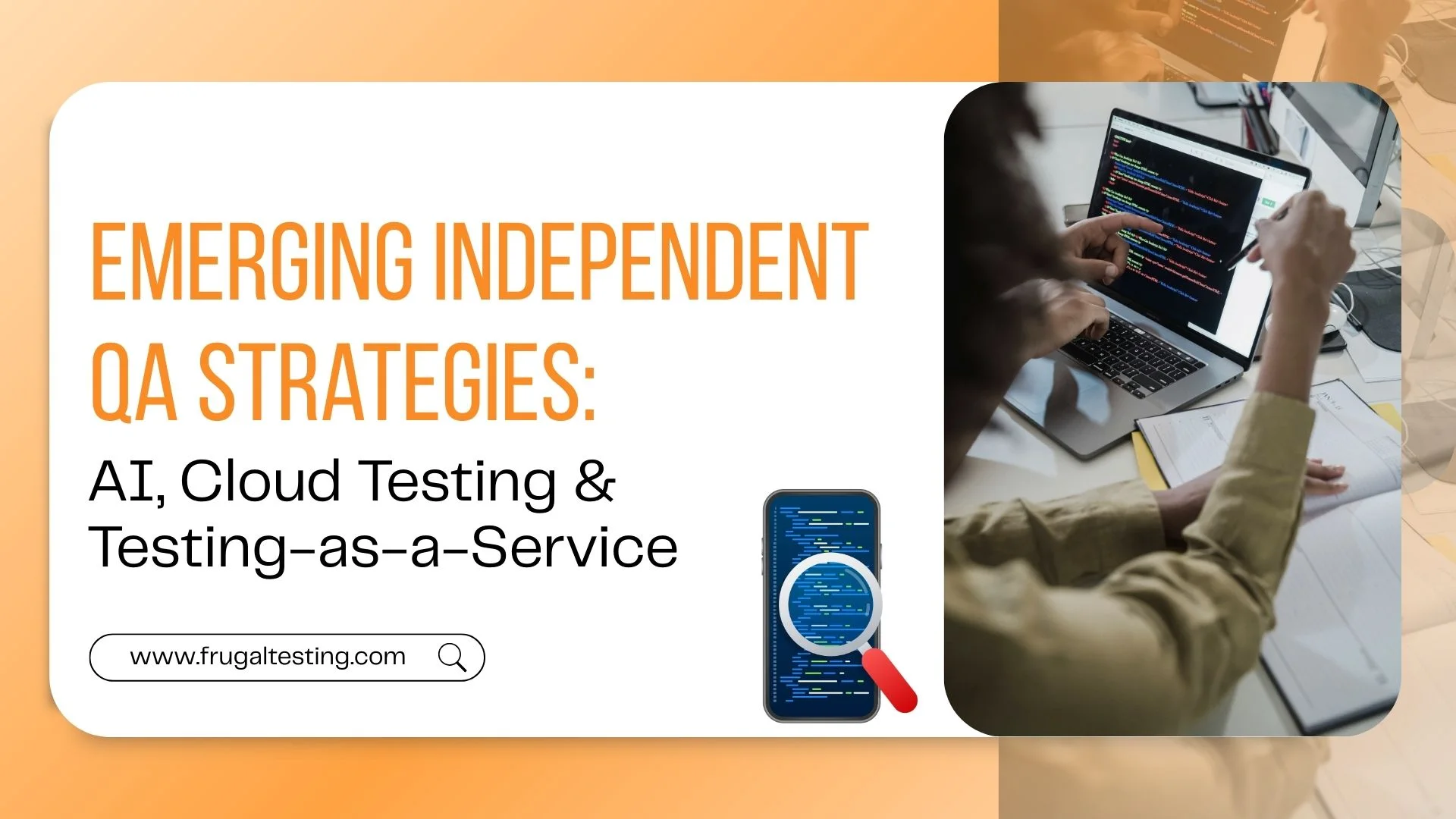
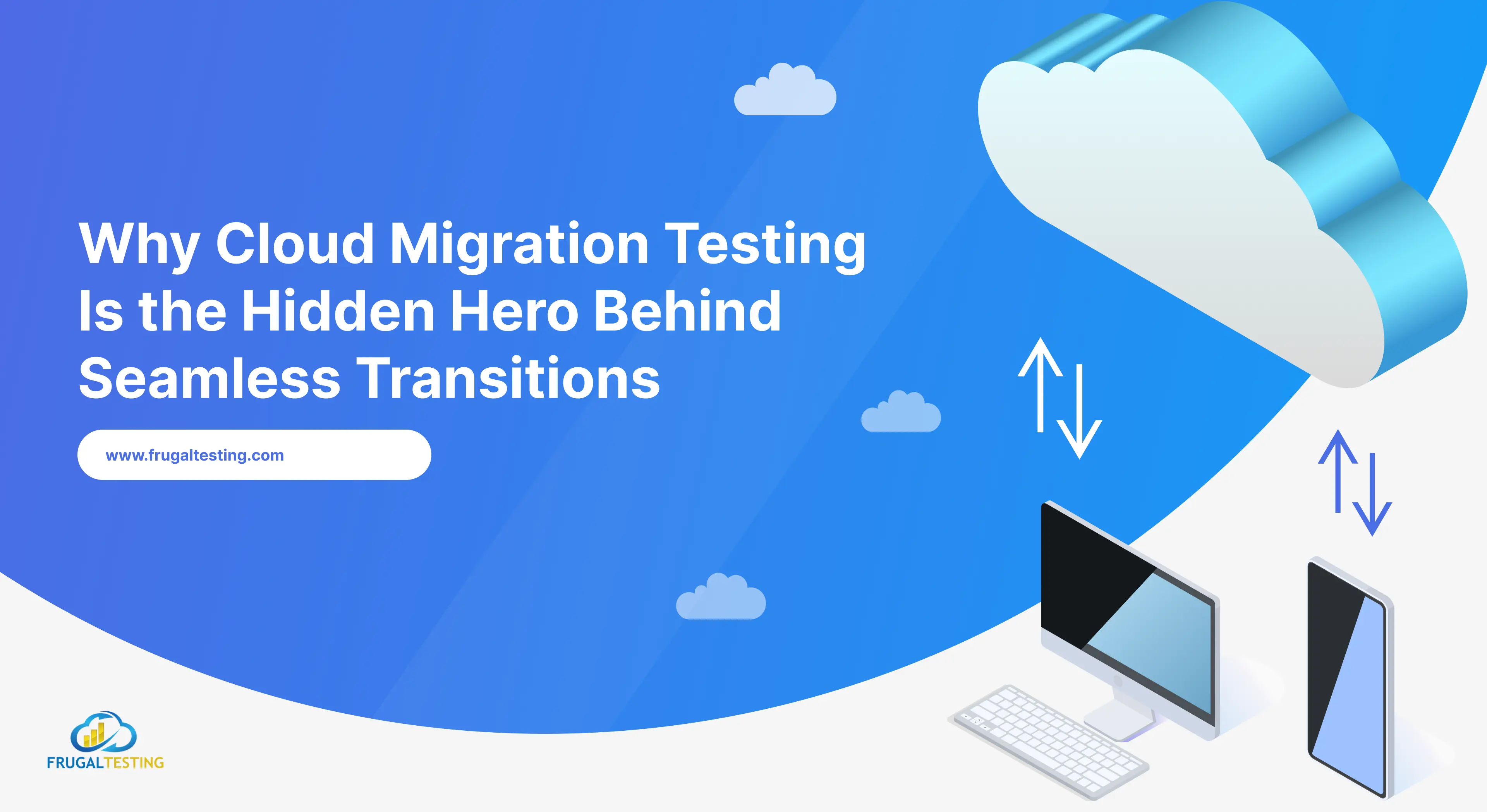
%201.webp)

